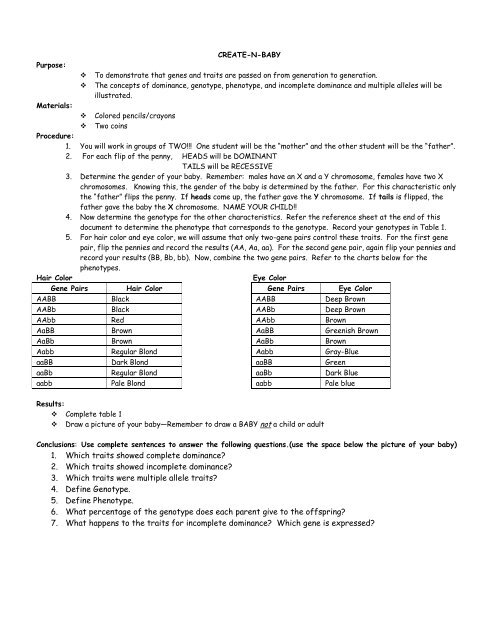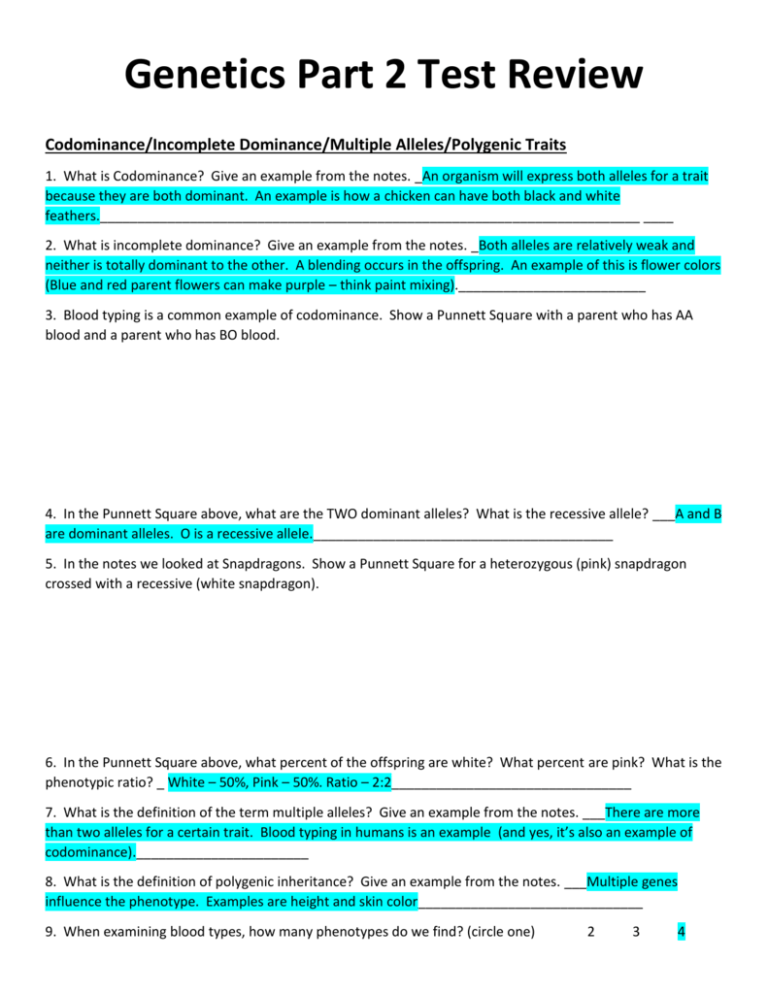

Pea seeds may be round (R) or wrinkled (r). Pea flowers may be purple (P) or white (p). The rule of multiplication applies to these independent events. If each parent can produce 100 genetically distinct gametes, how many genetically distinct offspring can two parents produce? Pairs of homologous chromosomes carry the same genes. applies only to genes that are present on different chromosomes (or behave as if they were) can account for a 9:3:3:1 ratio seen in the F2 generation states that the alleles at different loci segregate independently from one another during a dihybrid cross The characters each were controlled by a single gene. The traits varied in an either-or fashion. It was possible to isolate true-breeding varieties for each trait. They were controlled by loci that were (or behaved as if they were) on different chromosomes. In carrying out his breeding studies, Mendel examined characters that had which of the following properties?

Would have deviated from the 9:3:3:1 phenotypic ratio that is predicted by the law of independent assortment If the two traits that Mendel looked at in his dihybrid cross of smooth yellow peas with wrinkled green peas had been controlled by genes that were located near each other on the same chromosome, then the F2 generation _. In Mendel’s monohybrid cross of purple-flowered and white-flowered peas, all members of the F1 generation had the _ phenotype because their genotype was _ at the flower-color locus.

The offspring of an AA x Aa cross are either AA or Aa. If an organism that is homozygous dominant is crossed with a heterozygote for that trait, the offspring will be _. If all the progeny show the dominant phenotype, the parent must have been homozygous, transmitting the dominant allele to all of the offspring. The parent with the dominant phenotype was homozygous. What is indicated when a single-character testcross yields offspring that all have the dominant phenotype? If one parent has the genotype Tt and the other parent has the genotype tt, about half of the offspring will be tall. The ratio of tall offspring to short offspring is 1:1.

Which outcome below would indicate that the tall parent plant was heterozygous? A tall plant is mated with a short plant. Pea plants are tall if they have the genotype TT or Tt, and they are short if they have genotype tt. A plant with the genotype AABbcc will have the same phenotype as a plant with the genotype _. In a certain plant, the alleles A, B, and C are completely dominant to the alleles a, b, and c. Unless a mutation has occurred during DNA synthesis, sister chromatids will always carry the same allele. The F1 generation differed from the F2 in Mendel’s experiments in that _.Īll of the F1 showed the dominant phenotype, but only three-fourths of the F2 didĭifferent alleles are different DNA sequences found at the same locus on homologous chromosomes. The tall allele is completely dominant to the dwarf allele. If a homozygous dominant individual is crossed with a homozygous dwarf, the offspring will _. The conclusion is that the cross must be AArr x aaRr.Īssume tall (T) is completely dominant to dwarf (t) in a certain species of plant. Because half the apples are red and half are yellow, the red parent must be heterozygous for red. Because all the offspring are big, the big parent must be homozygous for A. Trees that produce small red apples could be aaRR or aaRr. Trees that produce big yellow apples could be AArr or Aarr. When the two are crossed, you find that half of the new trees produce big red apples and half produce big yellow apples. You have one tree that produces big yellow apples and another tree that produces small red apples. All the progeny would show the same phenotype.Ī = big apples R = red apples a = small apples r = yellow apples. If the plant were allowed to self-pollinate, all of the progeny would have the dominant trait If a plant variety is true-breeding for a dominant trait, then _. The blending inheritance hypothesis, but not the particulate hypothesis, maintained that after a mating, the genetic material provided by each of the two parents is mixed in the offspring, losing its individual identity. Which choice below is a basic difference between Mendel’s particulate hypothesis and the hypothesis of blending inheritance?


 0 kommentar(er)
0 kommentar(er)
